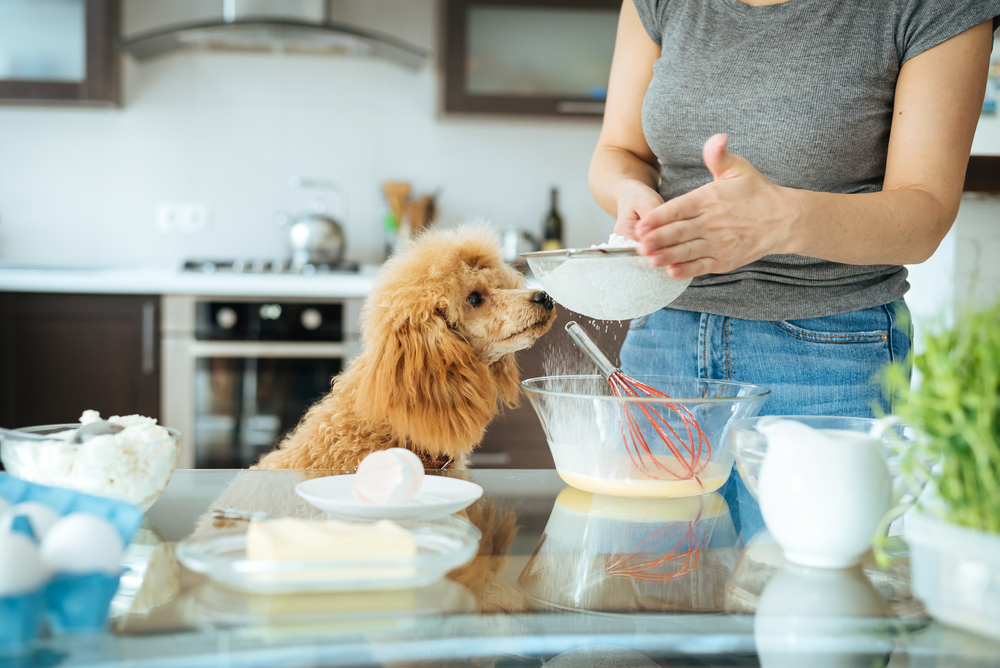For a variety of reasons, there is a growing community of pet owners who have committed to making homemade dog food instead of feeding their furry family members dry kibble. Whether it’s a food sensitivity, skin allergies, or simply the desire to feed meals with fresh ingredients, you’re in good company if you’ve been thinking about making the switch from kibble to homemade.
Of course, it all begins with having a conversation with your dog’s veterinarian. She can help you determine what type of diet is right for your dog’s breed, age, and weight. If she’s on board and you’re looking for some time-saving tips, we’ve got you covered. This is how you can use your Instant Pot multicooker to make homemade dog food.

Where to find dog food recipes
Making homemade dog food isn’t as easy as sharing the same food you cook for your family with your four-legged friend. Regardless of how much you love your dog, canines have different dietary needs that kibble manufacturers have provided for. Plus, a lot of foods that we eat are toxic to dogs, such as avocado, chocolate, and artificial sweeteners, just to name a few.
For those reasons, make sure to ask your veterinarian for advice about the best recipes and supplements for you to use. If you choose to search online for suggestions, make sure to download recipes from sites like Balance IT, where the content is written and approved by veterinarians who specialize in dietary requirements.
How to adapt for Instant Pot cooking
Once you’ve found a few recipes to try, you’ll need to adapt them to cooking in your Instant Pot. Here are a few suggestions:
- Use less liquid. You need at least 1 cup of broth or water to create the steam necessary to cook the food, but not much more. You can always add more after cooking if the meal is too dry.
- Don’t fill the Instant Pot more than two-thirds full. Unlike a slow cooker, the Instant Pot needs room to create pressure to cook.
- Adjust the cooking time. Cooking meat takes only two-thirds the time in an Instant Pot that it does in an oven; vegetables and pasta, like rice, take only about 5 minutes.
- Look for recipes with ground beef or turkey. That way, you can use the saute mode to cook the meat before adding pasta and/or vegetables.
- Set the pot to pressure cook (or manual, depending on your model) and cook for between 5 and 7 minutes.
- Add any nutritional supplements or dietary aids after the food has finished cooking.
Note: You’ll probably have to play around to find the right mix of ingredients and cooking time for each recipe. To make sure you’re not overfeeding your pup, know the calorie count for the entire dish so you can control portion size appropriately.

How to save for later
Depending on the size of your dog and his recommended daily caloric intake, an Instant Pot full of homemade dog food can last a few days. You’ll want to store it properly to maximize its shelf life. Make sure the food is cool before portioning it into inexpensive plastic containers for storage in the refrigerator. Freeze any food in meal-sized portions that can’t be consumed in three to four days. Health experts say the risk of foodborne illness increases after that amount of time. (And, yes, despite what you may have seen your dog eat from time to time, he is at risk of developing foodborne illness from eating spoiled food.)
Convenience and satisfaction
Without question, making your own dog food is a commitment. There will be days when you don’t feel like running to the store for the right ingredients or putting in the effort to chop the vegetables for later. But cooking for your dog can be a healthier option, especially if you’re concerned about managing his weight, relieving food allergies, or just watching him do a happy dance every time you pick up his dog food bowl.
Plan ahead, buy ingredients on sale, and use equipment like the Instant Pot to lend a helping hand. We all know you shouldn’t feed your dog from the table, but when you cook dog-healthy meals in an Instant Pot, the satisfaction you receive almost feels the same.


